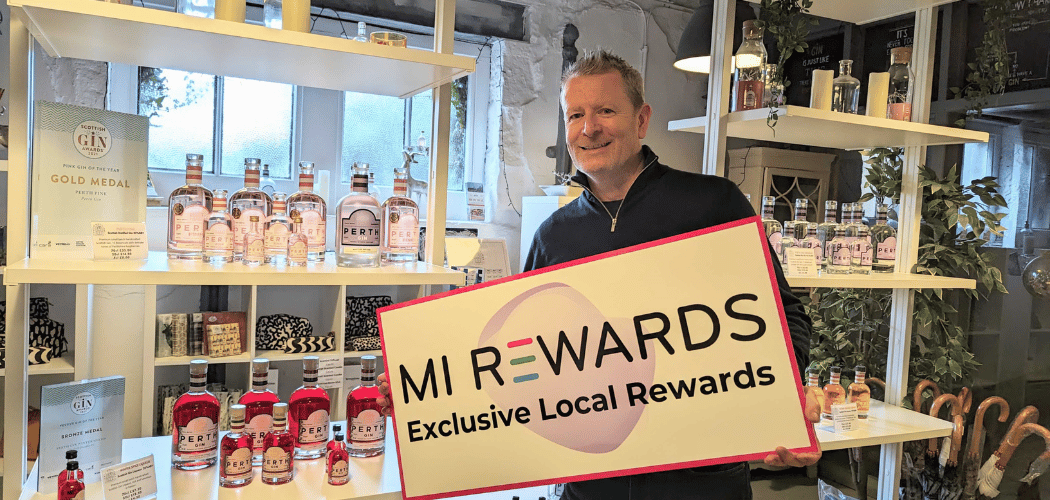M-loyalty could be 'game changer' for retailers
With smartphones proliferating and customers using them to gather information, compare prices, place orders and redeem offers, customer expectations are starting to run far ahead of many retailer's capabilities, according to Steve Gray of Mobilize Systems.
The mobile phone is a versatile, relevant and ubiquitous medium, representing a two-way marketing tool that, if used correctly, can dramatically improve a retailer's ability to understand, acquire, retain and service its customers.
In a recent study by Aberdeen Group of the mobile channel in retail marketing, 38% of retailers were already using mobile marketing techniques and another 50% said they were planning to do so during the following 12 months.
According to Gray, the mobile phone could be a 'game changer' for retailers that operate customer loyalty programmes, too. For example, Tesco has grown from being the number 2 food retailer in the UK to being number 2 in the world, and this success has in part been attributed to the way the company used insights drawn from its Clubcard programme to improve marketing relevance. Many other retailers also operate loyalty programmes that provide data to help target communications, offers and incentives, as well as to assist decisions concerning product ranges, pricing and promotions.
But, as with anything worthwhile, loyalty programmes come at a cost. In order to identify and reward their most faithful customers, retailers typically issue plastic cards which customers have to carry with them and swipe when they shop. Many customers forget them, or choose not to carry them in order to avoid having a wallet or purse bulging with plastic cards.
It costs money to issue the cards (and re-issue them when they get lost), and it costs money to print, post and count the millions of coupons and vouchers that are issued as a result, and to individually scan them when they are redeemed. Entire call centres or customer service operations are often maintained to help people join, let them know how many points they have, and to answer queries.
But these costs can be saved (or at least reduced) by communicating via email and asking customers to print vouchers at home. However, email response rates are typically very low, customers typically can't remember what the offer was for when they shop, and self printing is often "clunky" and open to fraud.
This is where the mobile phone can change the rules of the game, according to Gray. Running the loyalty programme via the customer's mobile phone provides benefits both for customers and retailers.
The phone is usually with the customer and it is usually switched on. With a phone it's easy to join a loyalty programme via text message (SMS) or by downloading a mobile app. The phone can carry an almost infinite number of loyalty memberships, and wallets are once again free to carry cash and essential cards.
At the same time, targeted and personalised offers and vouchers can be sent to phones via SMS or to the mobile app, and these can be safely stored and redeemed whenever required. A simple scan of the phone is all that is required to redeem multiple offers at the checkout, rather than having to scan each offer individually.
Mobile loyalty marketing can therefore improve retailer profitability. The easier and simpler it is for customers, the more they will engage with the programme, the more they will shop to collect points and to redeem offers, and the more this will increase sales.
Additionally, considerable cost savings can be made on card issuing and replacement, administration, customer service, print, postage and fulfillment costs. In the UK market alone, these costs can easily mount up to anything from £5 to £10 per customer per year, and many retailers have millions of enrolled customers. But, used correctly, mobile marketing enables retailers to provide timely and relevant information and offers. It also enables retailers to respond to requests and gain fast and immediate feedback on their products and services.
There are 3 core requirements for successful mobile loyalty marketing:
- Customers require a unique user ID on their phone;
- The ID must be unique to a retailer's customer. It lets the retailer assign the appropriate rewards and manage redemptions accurately;
- It must be easy to scan the user ID at the point of sale.
Everyone wants to speed up the checkout experience so it has to be quick, with all collection and redemption achieved via one scan - no one wants to be behind the customer who has five or six coupons to redeem, all of which have to be separately scanned.
Offers must be both received and stored on the phone, and then immediately validated and deducted at the checkout. Customers want to know what offers they have available when they are shopping and they want their discounts applied instantly.
In the UK, a number of retailers have started to take first steps toward mobilising their loyalty programmes, and supermarkets are leading the way.
For example, Sainsburys has taken its first step in partnership with Nectar, which has an iPhone application that allows collectors to receive information about the programme, understand how many points they have, and receive offers from Nectar partners. These offers can then be made live via an opt-in button on the offer page. This greatly improves customer awareness of partner offers and the customer always has them on hand. It is also a good way for a brand to stay at the 'front of mind' with the customer.
Tesco, with 14 million loyalty card holders, has also adopted the first of the three core elements of mobile loyalty marketing in having a smartphone application that provides an ID on the phone (as a scannable barcode). The barcode app is available on the iPhone, Android and Nokia platforms, and some estimates suggest that more than 1 million customers have already downloaded and are using these apps instead of their plastic card or key fob. This will clearly improve Clubcard's participation rate, reduce card issuance costs, and reduce 'wallet bulge' for members.
Tesco has already installed imaging scanners in their serviced checkouts, allowing on-screen mobile bar codes to be scanned just as easily as a plastic loyalty card or key fob. The business case for installing these scanners is straightforward: for a supermarket they would pay back if between 10 and 20 customers per store switched to mobile (based purely on cost savings, without taking into account sales uplifts and faster checkout speeds).
According to scanner suppliers Motorola and Datalogic, almost all retail scanning tenders are now requesting the ability to scan mobile barcodes.
More Info:




